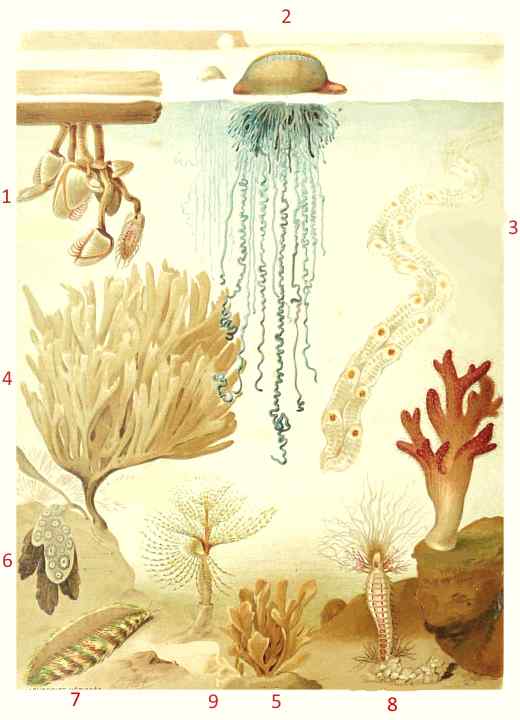Goose barnacles
Goose barnacles are filterfeeders that live in the sea. They are mostly attached to rocks, but sometimes hang upsidedown on floating wood pieces, or slow moving boats. All though goose barnacles resemble molluscs because of their apparent possession of a shell, they are in fact related to lobsters, so crustaceans.

The 6 pairs of legs are transformed to filters used for catching plankton, and transport them to the mouth.
A foto mede byMarion Haarsma.
Goose barnacles reproduction
Most of the the goose barnacles are hermaphrodite. Goose barnacles produce large amount of nauphili: the hatched eggs develop into a one-eyed larva that leaves to barnacle to become a part of the plankton. In fact they can be found in almost every portion of plankton that is examined under a microscope. Here they attach onto floating objects (wood, boats, seaweed) or rocks.

Living Percebes or Lepas anatifera, the gooseneck barnacles.
The dark gooseneck or stalk is the part that is eaten.
Goose barnacles or percebes
Percebes are the spanish gooseneck barnacles, they are collected on the Galician Atlantic coast. Collecting these goose barnacles is dangerous job, the percebes are removed from the rocks using a knife. only the stalk is eaten. They taste like lobster: they are related to lobsters. Percebes or Lepas anatifera are very easely prepared: just let the water boil for a second, and they are finished.
Goose barnacles and antifouling
Barnacles use cement for permanent attachment to the hull of ships. The cement is an underwateradhesive insoluble protein complex, that once it is formed, is almost impossible to remove. The coating that must prevent the attachment of (Goose) barnacles is called anti-fouling. Anti-fouling contains insecticides: These insecticides are thought to be responsible for the decline of young fishes. TBT was such an insecticide that kills settling fouling organisms , and at the same time, the surface becomes smoother. But TBT had other effects , the most important is the decline in birth of shellfish. New kinds of antifouling now uses less toxic insecticides.

Some special forms of sealive. source: Colin & Cie, 1897
1 goose barnacles or Lepadidae
2 man-of-war
3 salpes sp
4 Phidoloporidae sp
5 Flustra foliacea
6 Botrylle sp
7 seamouse or Aphrodita aculeata
8 sand mason worm or Lanice conchilega
9 feather duster worm or Spirographis spallanzi
Darwin, barnacles and seapocks
Darwin was a biologist who spend a large part of his live studying the seapocks and the closely related goose barnacles . By studying the goose barnacles he formulated the evolution theory. It cost Darwin great effort as the evolution theory was in contradiction to his own belief, that all living things were created directly by God. Darwin, 1859, On the origin of species by means of natural selection
